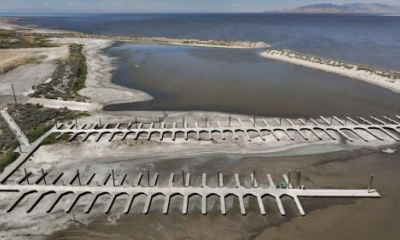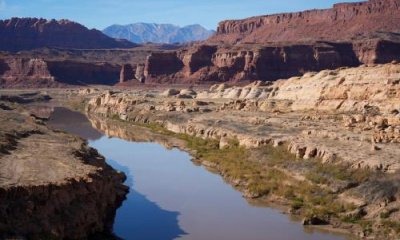SALT LAKE CITY — Getting the Great Salt Lake back to a comfortable water level is going to take a lot of precipitation and work.
One thing is for certain, we need to keep seeing more of the same stormy patterns we’ve been seeing this winter.
That will help contribute to our snowpack and eventually our runoff, which will help lake levels rise.
Utah has had so many solid winter storms this season that we are well above the average for snowpack. But when it comes to the drought situation in Utah, this is not a one-and-done deal.
“We’ve been talking about needing a winter like this for a while,” Jordan Clayton a snowpack surveyor supervisor said.
This year’s snowpack is a big step in the right direction and is helping to loosen the drought’s grip on the Beehive state.
“The last time we had a snowpack this good, which was 2017, the net gain on the lake was about a foot and a half,” Dr. Kevin Perry with the University of Utah said. He has studied the lake for years.
The big snow storms this winter are giving a boost to the Great Salt Lake.
“Normally speaking, when we have a good snowpack like this, we can expect that the lake level will rise between two-and-a-half and three-and-a-half feet,” Perry said.
Our early-season valley rain and mountain snow allowed for the Great Salt Lake to rise over a foot in just the last two months. With the Wasatch Mountains already reaching average levels of snowfall, we anticipate an additional two-to-three-foot rise in the coming months.
If our stormy pattern continues into the spring we could add even more water to the lake this season making for a critical replenishment.
Perry said, “Because this is a problem that was caused by our choices and how we use water, we can decide that the lake is worth saving and change how we use water and it’s within our power to save the lake.”
He said there are steps we can take to keep things trending in the right direction.
“We need to reduce the amount of water that we use in northern Utah by 30% just to give the lake a fighting chance,” Perry added.
With our increased population and so many sources drawing from the overall water supply, the lake is constantly at risk. Having normal winters just isn’t enough anymore.
“We have to have 130% of the normal snowpack just for the lake not to shrink,” Perry said.
Over the last few years, as the lake level has fallen, we’ve started to see the consequences of both drought and overconsumption. The appearance of toxic dust beds exposes a dangerous problem.
Perry added, “Unfortunately, in the last four years, the lake has dropped five feet and that has increased the number of dust hot spots by 40%.”
Once exposed, these dust hot spots can introduce arsenic and other harmful toxins into the air making for a significant environmental impact.
“Because the dust was the first environmental problem associated with the shrinkage of the lake, it’s going to be the last to be solved,” Perry explained. “It takes about ten feet of water to cover up to 80% of the dust hot spots and so this is something that’s going to take, you know, five to ten years to try and solve.”
The good news is the lake is rising. While we cannot control how much water falls from the sky, we can implement better water conservation, water management, and sound policy to help preserve our state’s most famous lake.








